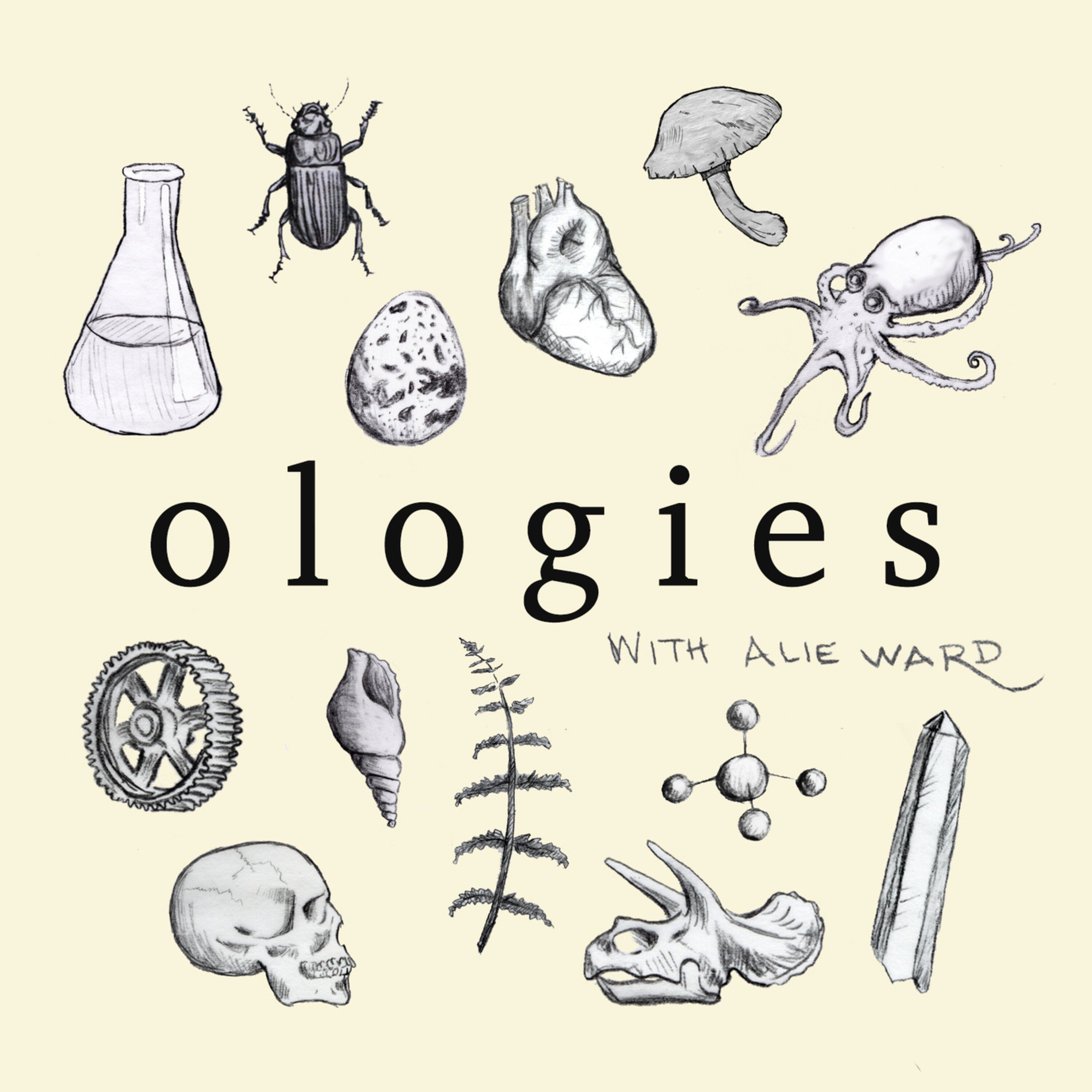
Heliox: Where Evidence Meets Empathy 🇨🇦
Join our hosts as they break down complex data into understandable insights, providing you with the knowledge to navigate our rapidly changing world. Tune in for a thoughtful, evidence-based discussion that bridges expert analysis with real-world implications, an SCZoomers Podcast
Independent, moderated, timely, deep, gentle, clinical, global, and community conversations about things that matter. Breathe Easy, we go deep and lightly surface the big ideas.
Curated, independent, moderated, timely, deep, gentle, evidenced-based, clinical & community information regarding COVID-19. Since 2017, it has focused on Covid since Feb 2020, with Multiple Stores per day, hence a sizeable searchable base of stories to date. More than 4000 stories on COVID-19 alone. Hundreds of stories on Climate Change.
Zoomers of the Sunshine Coast is a news organization with the advantages of deeply rooted connections within our local community, combined with a provincial, national and global following and exposure. In written form, audio, and video, we provide evidence-based and referenced stories interspersed with curated commentary, satire and humour. We reference where our stories come from and who wrote, published, and even inspired them. Using a social media platform means we have a much higher degree of interaction with our readers than conventional media and provides a significant amplification effect, positively. We expect the same courtesy of other media referencing our stories.
Heliox: Where Evidence Meets Empathy 🇨🇦
The Pigments That Built Empires: What Ancient Dyes Reveal About Power, Scarcity, and Human Nature
What's fascinating isn't just the scarcity but how swiftly that scarcity was weaponized as a tool of social control.
In Rome, the wearing of purple evolved from a status symbol into a legally enforced class marker. Julius Caesar began wearing the all-purple toga praetexta as a show of power. By the 5th century CE, purple had become a complete state monopoly. Only the emperor or those specifically granted permission could legally wear or even purchase purple silk garments, the kekalumina. Foreigners were banned from trading them.
This transformation—from luxury good to legally restricted symbol of power—follows a pattern we still see today. The moment something acquires value through scarcity, systems of exclusion inevitably emerge around it. ... continue reading the article
This is Heliox: Where Evidence Meets Empathy
Independent, moderated, timely, deep, gentle, clinical, global, and community conversations about things that matter. Breathe Easy, we go deep and lightly surface the big ideas.
Thanks for listening today!
Four recurring narratives underlie every episode: boundary dissolution, adaptive complexity, embodied knowledge, and quantum-like uncertainty. These aren’t just philosophical musings but frameworks for understanding our modern world.
We hope you continue exploring our other podcasts, responding to the content, and checking out our related articles on the Heliox Podcast on Substack.
About SCZoomers:
https://www.facebook.com/groups/1632045180447285
https://x.com/SCZoomers
https://mstdn.ca/@SCZoomers
https://bsky.app/profile/safety.bsky.app
Spoken word, short and sweet, with rhythm and a catchy beat.
http://tinyurl.com/stonefolksongs
Curated, independent, moderated, timely, deep, gentle, evidenced-based, clinical & community information regarding COVID-19. Since 2017, it has focused on Covid since Feb 2020, with Multiple Stores per day, hence a large searchable base of stories to date. More than 4000 stories on COVID-19 alone. Hundreds of stories on Climate Change.
Zoomers of the Sunshine Coast is a news organization with the advantages of deeply rooted connections within our local community, combined with a provincial, national and global following and exposure. In written form, audio, and video, we provide evidence-based and referenced stories interspersed with curated commentary, satire and humour. We reference where our stories come from and who wrote, published, and even inspired them. Using a social media platform means we have a much higher degree of interaction with our readers than conventional media and provides a significant amplification effect, positively. We expect the same courtesy of other media referencing our stories.
This is Heliox, where evidence meets empathy. Independent, moderated, timely, deep, gentle, clinical, global, and community conversations about things that matter. Breathe easy. We go deep and lightly surface the big ideas. Can you imagine a color so incredibly valuable that it was literally worth more than gold? It sounds like something out of a myth, doesn't it? It really does. That's the realm of Tyrian purple, and it's just the first stop on our colorful exploration today. Precisely. Today, we're taking a deep dive into the fascinating history and the chemistry of two truly iconic colors, purple and blue. Yeah, and these aren't just any colors, more than just looking good. These hues have, wow, they've profoundly impacted societies, haven't they? Absolutely. They symbolize power in really remarkable ways and were even central to global economies at times. We've gathered a fascinating array of sources for you. Everything from ancient accounts detailing the almost mythical origins and incredibly involved creation of Tyrian purple. Yeah, to explorations of the longstanding allure and scientific development of blue pigments. And even some really cutting-edge scientific research that's revealing the chemical secrets behind those ancient purple dyes. From sea snails, believe it or not. Our mission, then, is to extract the most intriguing insights, the surprising stories, the ingenious, sometimes smelly processes, and the deep meanings woven into these colors. And to help us navigate this vibrant terrain, we're delighted to have our expert speaker here to illuminate the scientific and historical dimensions of these extraordinary pigments. Glad to be diving up. Okay, let's unpack this, starting with Tyrian purple. Truly the color associated with royalty, you could say. Definitely. Its story takes us all the way back to the Bronze Age. We're talking about the Phoenician city of Tyre. And the initial discovery. Well, it involves a bit of animal misadventure, according to legend anyway. It's interesting, isn't it, how often pivotal discoveries seem to have that touch of serendipity. Totally. So what's the story? Well, the tale goes that the dog belonging to Tyros, apparently a favorite woman of the city's patron god Melkart, chomped down on a murex shellfish that had washed ashore, and in doing so, stained its mouth this vivid purple. And Tyros, understandably captivated by this unusual hue, demanded a garment dyed in the same way. Just like that. Just like that, or so the story goes. A legendary dyeing industry was supposedly born. Makes you wonder how many accidental discoveries really shaped our world. It's a compelling origin story, isn't it? And it seems there's some historical substance behind it, too. There is. Our sources indicate that the earliest written records of this dye appear in 14th century BCE texts. Right, from Ugarit and Hittite sources in the eastern Mediterranean. That's the 14th century before the Common Era. Exactly. And purple dyed cloth became this incredibly successful export for the Phoenicians. It really brought them renowned throughout the ancient world. There's even a theory, though I gather it's debated, that the name Phoenicia itself might stem from the Greek word for dark red, possibly referencing this very dye. That's right. So a single product might have literally named an entire civilization. It really underscores how a specific commodity can become so deeply intertwined with a culture's identity and its economic success. Absolutely. And it's important to remember, despite their strong association with it, the Phoenicians weren't the only ones making this die, even early on. Oh, really? Yeah, archaeological findings from Nassos on Minoan Crete show evidence of small-scale production there, too. They also had access to the necessary shellfish, you see. Ah, okay. So how did they actually do it? How did they create this incredibly valuable die? It sounds like a rather involved and maybe unpleasant process. It was indeed quite an undertaking. The dye was primarily extracted from a few specific species of murex shellfish. Like which ones? We're talking hexflix trunculus, purpural apillus, helixanthephina, and especially blindness branderus that one used to be called murex branderus. Okay. These shellfish lived in relatively deep waters, so they had to be caught using baited traps. Then came the less appealing part. I'm gracing myself. The dye was obtained from the glands of thousands upon thousands of crushed and, well, left to putrefy shellfish. Oh, wow. Putrefy. Yes, which were then baked in the sun. You can only imagine the stench. Oh, the smell. One of our sources notes that Sidon's dye workshop was actually situated 14 kilometers south of the city at Sarepta. Makes sense. You had to think that was at least partly a strategy to keep that overwhelming odor at a distance. That's a very insightful point. Self-preservation, maybe? Yeah. Later on, Pliny the Elder, the Roman also, described a slightly more refined process. How so? It involved adding salt to the mashed glands and boiling the mixture in tin vessels for three days. Finally, whole fleeces of wool were dipped into the resulting liquid to get the color. So they dyed the wool itself first. Interestingly, yes. The fibers were generally dyed before they were woven into garments. And the sheer number of shellfish required is almost unbelievable. I read something like 10,000 shellfish. Get this. Around 10,000 shellfish would yield just one gram of the dye stuff. One gram. Barely enough to color the trim, the hem, of a single garment in a shade. Okay, that really helps understand why it commanded a price higher than its weight in gold. Exactly. It's staggering. A single garment could cost more than a person's life savings. It just highlights how precious and symbolic color could be. Do we have any idea, like, specific prices? We do, actually. The price edict issued by Emperor Diocletian in 301 CE gives us a concrete measure. One pound of purple dye was valued at 150,000 denarii. Which was? Equivalent to roughly three pounds of gold. Or about $19,000 in today's currency, based on when that source was written. Wow. And even wool that was pre-died in purple was valued at a pound of gold per pound of wool. It's no surprise, then, that vast mounds of discarded shells have been discovered at Sidon and Tyre, some reaching, what, 40 meters high? Astonishing, isn't it? They essentially drove the local shellfish populations to near extinction in Phoenicia. But as our sources point out, the Phoenicians didn't just trade the finished dyed cloth. They were smart. Oh, absolutely. They also disseminated the dye extraction process itself to their colonies across the Mediterranean. Carthage became a huge production hub. Which not only showcases their commercial acumen, but also the immense value placed on this specialized knowledge. Exactly. Manufacturing centers popped up in various locations. Rhodes, Lesbos, Mottia in Sicily, Kirquiania in North Africa, parts of Asia Minor, Southern Italy. But the original Tyrian purple was still the best. It remained the most coveted, yes, because their sort of accumulated expertise allowed them to masterfully blend different shellfish species, maybe in specific sequences, and even incorporate secret ingredients. Giving it that unique look. That highly prized deep purple that appeared almost crimson under certain lights. Plus, it was remarkably durable and resistant to feeding, added to its lasting value. Though naturally, where there's high demand and an exorbitant price, you get fakes, right? Cheaper imitations. Of course. Our sources mention that purple dyes were also derived from lichens or by a process of over-dyeing textiles red first, then blue on top. Ever. And in Gaul, hortleberry was even used to dye fabric purple, ironically, for the clothing of enslaved people. Wow, the contrast. These alternatives certainly existed, but they likely lack the vibrancy, the depth of hue, and the enduring quality of genuine Tyrian purple. Which just cemented its position as the luxury item, a power symbol. Status, prestige, wealth, absolutely. Its immense value is even evident in ancient tribute lists where it appears alongside silver and gold. Right, like Alexander the Great reportedly finding 5,000 talents of purple cloth in Susa. Which is a significant unit of wealth back then, a truly massive quantity. And the Romans were particularly enamored with purple, weren't they? They reserved it for the absolute elite. Indeed they were. The toga praetexta, with its purple border, was worn by magistrates and certain elites. And for generals. Triumphant generals on their big day could wear the toga picta entirely purple with a gold border. Eventually, purple became inextricably linked with the emperor himself. Julius Caesar started that trend, right? Regularly wearing the all-purple toga per perea. He did. And by the 5th century CE, it essentially became a complete state monopoly. Right. Purple and silk together were the ultimate power statement. Precisely. Starting from Alexander Severus' reign, only the emperor or those he specifically authorized could wear or even purchase these luxurious silk garments, the kekalumina. And foreigners were banned from trading them. Strictly forbidden. Emperors were frequently depicted wearing Tyrian purple. You see it in the renowned mosaic of Justinian the Serst, for example. And its association with the priesthood also endured for many centuries. It did, which is fascinating. This color, so deeply connected to earthly power, also held this significant religious association. Although, as we know, purple robes for church vestments were eventually replaced by scarlet in the 15th century. But Paul II, I think. That's the one. And the symbolism of purple extended beyond textiles, too. Even imperial monuments and sarcophagi incorporated purple using porphyry marble. Which has that naturally rich purple color. Exactly. And Tyrian purple was even used to dye parchment for really important texts, like the Codex Rossano. It truly saturated the visual culture of the time. Okay, so having explored the remarkable story of Tyrian purple from the Murex snail, let's now turn our attention to another color with a long and fascinating history. Blue. Ah, blue. It hasn't always carried the same connotations as it does in our modern world, has it? We think calm, maybe corporate. That's a great point. Historically, blue has been imbued with a really diverse spectrum of meanings. In the ancient world, often linked to mystical powers, the heavens. Right. Centuries later, it became associated with royalty, then uniforms, navy, hospitals, factories. And today, like you said, psychology and design often link blue to productivity and calm. It's interesting how the pursuit of blue, from these rare stones to synthetic creations, kind of mirrors humanity's constant drive to understand and control the natural world. That's a really nice way to put it. It's intriguing how those cultural associations evolve. Our sources highlight lapis lazuli as the earliest known blue pigment. It's that stunning deep blue stone. Yes, and what's fascinating here is its primary origin, Afghanistan. Afghanistan. Primarily, yes. The very name, lapis lazuli, gives us a clue. Lapis meaning stone Lazuli meaning blue Likely from Persian So it traveled Oh, did it ever! This pigment was transported from Asia via the Silk Road For an astounding 6,000 years Right up until the 18th century All the way from the remote Sarasang Valley 6,000 years That's an incredible journey for a pigment across continents for millennia Isn't it? And it was incredibly highly prized by ancient civilizations Like who? Civilizations like Sumer and ancient Egypt held it in immense esteem. They used it for jewelry, headdresses, even in Tutankhamun's tomb treasures. Wow. And Cleopatra used it as eye shadow. Or is that just a story? Allegedly. That's the legend. Chemist Heinz-Burck offers an interesting perspective. Go on. He suggests that early humans just didn't have much access to blue in the natural world. It's not common in soils or minerals in easily usable forms. Which would make it seem more special and more mystical. Exactly. That rarity likely contributed to its mystical allure. That makes sense. But the ancient Egyptians also developed their own method for creating blue. Right? Egyptian blue. Indeed. Approximately 4,500 years ago, they developed the first synthetic pigment, Egyptian blue. What was it like? It's a bright crystalline substance, often a lighter shade compared to the deep blue of lapis lazuli. They formulated it basically to meet the significant demand for blue. A color they associated with. With the sky, fertility, the very act of creation. This pigment then spread throughout Egypt, into Greece, across the Roman Empire. But it vanished for a while. Interestingly, yes. Its use largely faded away after the decline of the Roman Empire for a period. Then we get ultramarine, which sounds like it's directly linked back to Lapis Lazuli. In a sense, yes. Ultramarine literally translates to beyond the sea, directly reflecting its origin from distant lands. It gained immense popularity during the Italian Renaissance, starting around the 12th century. It's really a foundational color in Western art history. And it was made by grinding lapis lazuli. Exactly. But the crucial aspect was how fine you ground it. Grind it too finely, and it would lose its vibrant blue hue and just look grayish. Tricky. And much like its source stone, it was incredibly expensive, wasn't it? Initially, yes. Actually more valuable than gold at first. Over time, it did become more accessible. though still costly. And the Renaissance artists loved it. Oh, yes. It was a favorite among artists like Cimabu, Duccio, Giotto. They often used it with a luxurious gold leaf for maximum impact. I read Tonino Tonini in his famous book Il Libro dell'Art, even detailed this lengthy, meticulous purification process for it. He did, and he described it as illustrious, beautiful, and most perfect beyond all other color. High praise indeed. And its use continued with later masters like Raphael, Botticelli, Titian, It also picked up a significant religious symbolism, didn't it? Precisely. Within Christian iconography, blue became a sacred color, partly because it was so expensive and partly the visual impact. So artists saved it for important figures. Often, yes. They reserve the most expensive pigments, like ultramarine, for depicting the most important religious figures, most notably the Virgin Mary. That's where we get the term Marian blue. Oh, okay. Moving forward in history, we encounter indigo, Another blue with a hugely significant past. Absolutely. Indigo rose to prominence as a major color and dye in the 16th and 17th centuries. It became so significant it actually ignited international trade conflicts. And tragically fueled the African slave trade too, right? It played a role, yes. It even earned its place in Isaac Newton's color spectrum in 1672. Where did it come from? It's derived from the Indigofera tinctoria plant. It was imported along the Silk Road from places like India and Egypt and became the primary natural dye for clothing for many people. And then came the synthetic version, which has its own interesting story tied to science. Yes. The German chemist Adolf von Beyer achieved the first synthesis of indigo in 1878. And that took over. Pretty quickly. By 1913, synthetic indigo had largely replaced the natural crop in commercial use. And it's the synthetic form that's used to dye, well, most of our denim jeans today. Wow. A powerful example of how scientific innovation can just completely transform industries. Definitely. Then there's Prussian blue emerging a bit later on the timeline. Prussian blue. That appeared in Germany, 18th century. Actually an accidental discovery by a Swiss paintmaker, Johann Jacob Diesbach. An accident. Apparently so. It holds the distinction of being the first color pigment to be chemically synthesized intentionally, though the initial finding was serendipitous. And a key factor was it was cheaper than ultramarine. Significantly cheaper and easier to produce compared to the still costly ultramarine. That was huge. And it had a notable impact on the art world as well, didn't it? It certainly did. It was widely adopted by Japanese artists, maybe most famously in a Hokusai's iconic Great Wave. Ah, yes. And in Western art, it's strongly associated with Picasso's Blue Period in the early 1900s. Right, where the blue reflected his mood. Exactly. His predominantly blue paintings poignantly reflected his deep sorrow and depression after a friend's suicide. The subjects were often somber, prostitutes, drunks, beggars. Which sort of reinforced that cultural association of blue with sadness or despair, unfortunately. It did contribute to that, yes. Though other artists, like Marc Chagall, had a profound connection to blue's expressive power, he famously said something like, When Matisse dies, Chagall will be the only painter left who understands what color is, highlighting his own connection to it. Powerful stuff. And finally, we arrive at International Klein Blue. That's a very specific and visually striking shade. He really is. Yves Klein, in the 1960s, developed his own unique formulation of blue pigment, which he famously named IKB. And he had a whole philosophy behind it. He did. His artistic aim was to capture the immaterial vastness of the sky. He even called himself a painter of space. He went on to create nearly 200 monochrome blue paintings, initially using ultramarine before perfecting his IKB. For Klein, blue held this fundamental philosophical significance. He said, Blue is the invisible becoming visible. Blue has no dimensions. It is beyond the dimensions of which other colors partake. It's quite a statement. It's a fascinating example of an artist really imbuing a color with profound conceptual meaning. It's remarkable how these various shades of blue carry such distinct histories, cultural meanings, and artistic intentions. Okay, now let's circle back to purple for a bit and delve into the science of those ancient mollusk pigments. Yes, this is where modern science meets ancient history. Our sources include some truly fascinating research using modern scientific techniques to unlock the molecular secrets of these ancient dyes, and even confirm historical accounts, right? Exactly. What's particularly interesting is how cutting-edge analytical techniques like high-performance liquid chromatography, HPLC for short, are now being used. To do what exactly? to precisely determine the chemical composition of archaeological purple pigments extracted from these murex mollusks. So we can know exactly what was in them. Precisely. It allows us to move beyond just relying on historical descriptions and gain a true molecular understanding of what these ancient dyes were actually made of and how they achieved those remarkable hues and their legendary durability or fastness. And what key insights have these scientific investigations provided? What have we learned? Well, this research has identified three primary chemical classes of colorants present in these purple pigments. Indigoids, indorubinoids, and isotenoids. Complex stuff. They're complex organic molecules, yes. And the subtle variations in their structure are what give Tyrian purple its unique range of shades and its legendary fastness, meaning it wouldn't fade easily. So what are some key findings? Key findings include figuring out the optimal ancient methods for obtaining the desired purple hue. identifying purple pigment on that 2,500-year-old royal marble jar belonging to the Persian king Darius I, and even providing scientific confirmation for the identity of the biblical argumen and tecalit. The biblical dyes! Seriously! Yes, in 2,000-year-old textile fragments discovered at Masada. That's absolutely incredible to be able to scientifically identify dyes, mentioned in historical texts, even the Bible. And the snails themselves, the hexaplex trunculus, Bellinus brandaris, and stromonidae hemostoma, they each have a unique chemical signature. They do. Hexaplex trunculus is particularly noteworthy because it can produce a whole range of purples. Reddish purple, bluish purple, violet. So it was versatile. Very. And in ancient times, it seems it was the principal source for creating both the red and blue shades of purple. In contrast, Bellinus brandaris and stromonidae hemostoma tend to yield pigments that lean more towards the red-purple end of the spectrum. So the ancient dyers really knew their stuff. They knew which snails to use for which shade. It certainly seems they had a sophisticated understanding, yes. Which snails to use, how to process them to achieve specific colors. And the process by which the color actually appears, it starts colorless. Exactly. Within the live snail's hypobranchial gland are colorless precursor compounds. When these are exposed to air and light, A whole series of enzymatic and photo-oxidative processes kick off. Leading to the color change. Right. The pigment goes through visible stages, starts white, then yellow, then green, before finally developing into the characteristic purple hue. And sunlight really speeds up this fascinating color development. So how do scientists actually analyze these tiny traces of ancient color on artifacts? It must be challenging. It requires specialized techniques. The development of a specific HPLC method using a mixture of methanol, water, and phosphoric acid lets them precisely separate and detect about 10 standard purple-related dye compounds. Okay. By carefully analyzing the retention time, how long each component takes to travel through the system, and its unique UVV's absorption spectrum. Its light signature? Kind of, yes. Scientists can create a chromatic fingerprint that is specific to each snail species. A fingerprint for color. Exactly. This detailed molecular signature is absolutely crucial for accurately determining the biological origin of ancient purple pigments found on archaeological discoveries. It's like forensic science for ancient colors. And this chromatic fingerprinting has led to some truly exciting archaeological discoveries and confirmations, hasn't it? Absolutely. At a 6th century BC site in Tel Dor, which looks like it was a dyeing installation, finding brominated indigoids provides strong evidence for mollusk-based purple dyes. Okay. Furthermore, a 7th century BC potsherd from Telcabri revealed the very first archaeological detection of DBIR that's a specific type of interurbinoid pigment. Wow, first time finding that. Then there's that mid-5th century BC royal jar of King Darius I. Analysis of the purple paint showed high levels of DBI and low levels of indigo, strongly suggesting it came from hexaplex trunculus. Amazing precision. And the biblical dyes from Masada. Perhaps most significantly, yes. Textile fragments from Masada, late 1st century BC, the Herodian fabric, thought to be part of King Herod's royal purple mantle, the Argonine, was also found to be produced from hexaplex trunculus with high DBI content. And even more remarkably, the biblical tecalit, that bluish purple textile, also from Masada. What about it? Scientifically identified as originating from exoplex trunculus 2, but with a higher concentration of IND or indigo. Suggesting a slightly different process, maybe? Possibly a different dying process, or perhaps even subtle variations in the snails used, or how they were treated before extraction. It's truly remarkable how modern science can shed light on these ancient practices, and even corroborate historical and biblical accounts with such precision. It really bridges the gap between ancient texts and tangible evidence. So as we draw this deep dive to a close, we've really seen how the pursuit of these vibrant colors, Tyrian, Popol, and Blue, spurred incredible innovation. Profoundly shaped societies. And even became deeply intertwined with religious symbolism and artistic expression. Indeed. From the arduous, frankly back-breaking labor of extracting minuscule amounts of dye from countless sea snails. To the accidental yet transformative breakthroughs in creating synthetic pigments. The long and colorful history of these hues serves as a powerful testament to human curiosity or ingenuity in the face of challenges. And the enduring significance of our visual world and how we choose to color it. Well said. And on that thought, maybe consider this. In our modern world, saturated as it is, with readily available mass-produced colors in every imaginable shade, have we perhaps in some way lost a sense of the immense effort and extraordinary value that was once intrinsically linked to these very hues? That's a really provocative question. Does abundance diminish appreciation? Maybe. What can the long and intricate history of these pigments tell us about our own ever-evolving relationship with color? and its continued perhaps often unconscious significance in our lives. Something to think about. Perhaps the next time you encounter a regal shade of purple or a deeply calming blue, you'll take a moment to reflect on the rich and complex stories that lie hidden within those seemingly simple shades. Thanks for listening today. Four recurring narratives underlie every episode. Boundary dissolution, adaptive complexity, embodied knowledge, and quantum-like uncertainty. These aren't just philosophical musings, but frameworks for understanding our modern world. We hope you continue exploring our other podcasts, responding to the content, and checking out our related articles at heliocspodcast.substack.com.
Podcasts we love
Check out these other fine podcasts recommended by us, not an algorithm.

Hidden Brain
Hidden Brain, Shankar Vedantam
All In The Mind
ABC
What Now? with Trevor Noah
Trevor Noah
No Stupid Questions
Freakonomics Radio + Stitcher
Entrepreneurial Thought Leaders (ETL)
Stanford eCorner
This Is That
CBC
Future Tense
ABC
The Naked Scientists Podcast
The Naked Scientists
Naked Neuroscience, from the Naked Scientists
James Tytko
The TED AI Show
TED
Ologies with Alie Ward
Alie Ward
The Daily
The New York Times
Savage Lovecast
Dan Savage
Huberman Lab
Scicomm Media
Freakonomics Radio
Freakonomics Radio + Stitcher
Ideas
CBC

